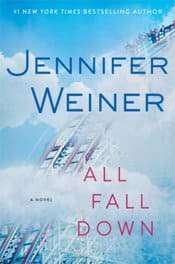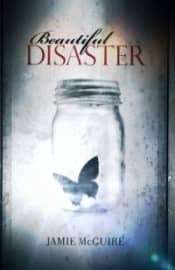New Adult
Fifteen years ago, everyone was talking about Chick Lit. It was the new big genre, and candy-colored books were flying off the shelves. Bridget Jones’s Diary, Confessions of a Shopaholic, anything by Jennifer Weiner – readers couldn’t get enough of the quirky heroines who awkwardly navigated love and careers. But these days it seems like bookstores are noticeably missing those familiar covers with large pink graphics and cartoon ladies clutching shopping bags and martinis.
 Not that Chick Lit has disappeared completely. Jennifer Weiner’s new book, All Fall Down, just came out last month, and Emily Giffin’s pastel-covered novels regularly hit the New York Times bestseller list. But where there used to be thousands of Chick Lit novels crowding every bookstore, now there are only a select few – mostly those superstar
Not that Chick Lit has disappeared completely. Jennifer Weiner’s new book, All Fall Down, just came out last month, and Emily Giffin’s pastel-covered novels regularly hit the New York Times bestseller list. But where there used to be thousands of Chick Lit novels crowding every bookstore, now there are only a select few – mostly those superstar  authors who have already proven their staying power. And sometimes even staying power isn’t enough. Just look at Helen Fielding, whose latest Bridget Jones novel, Mad About the Boy, was released last October and had nowhere near the kind of media frenzy it might have had 10 years ago.
authors who have already proven their staying power. And sometimes even staying power isn’t enough. Just look at Helen Fielding, whose latest Bridget Jones novel, Mad About the Boy, was released last October and had nowhere near the kind of media frenzy it might have had 10 years ago.
So what happened to Chick Lit? Has it lost its appeal or simply morphed into something a little younger and edgier? Because while Chick Lit is quietly disappearing, a newer genre is slowly creeping up to take its place: New Adult, a genre so new it was only officially coined by St. Martin’s Press in 2009.
New Adult, or NA, focuses on 18-25 year olds, is usually set in or around college, and deals with issues that plague young people – discovering their independence, exploring their first sexual encounters, beginning to make decisions about their futures, etc. NA books are often described as more grown up versions of Young Adult novels; at their core the stories are coming-of-age tales, though the themes tend to be darker and more mature. These are the books that explore that tumultuous, confusing time between your teenage and adult years, and readers can’t get enough.
 The current trend is surprising to some – for years, college-aged heroines were publishing’s no-man’s land. No one believed there was a market of readers for this tenuous age group. But when digital self-publishing started to take off, so did novels about new adults. According to aspiring NA author Dahlia Adler, “Traditional publishing wasn’t taking these kinds of books and self-publishing allowed both authors and fans to find a way around that.” If publishers thought there wasn’t a readership, they would soon be proven wrong. Self-published novels like Jamie McGuire’s Beautiful Disaster, shot to the top of the bestsellers lists.
The current trend is surprising to some – for years, college-aged heroines were publishing’s no-man’s land. No one believed there was a market of readers for this tenuous age group. But when digital self-publishing started to take off, so did novels about new adults. According to aspiring NA author Dahlia Adler, “Traditional publishing wasn’t taking these kinds of books and self-publishing allowed both authors and fans to find a way around that.” If publishers thought there wasn’t a readership, they would soon be proven wrong. Self-published novels like Jamie McGuire’s Beautiful Disaster, shot to the top of the bestsellers lists.  Its companion novel, Walking Disaster, debuted at #1 on the New York Times and USA Today lists. The almost-instant success of NA forced publishers to take note, and soon they were snatching up the books, as well as farming Amazon for popular novels in order to republish them.
Its companion novel, Walking Disaster, debuted at #1 on the New York Times and USA Today lists. The almost-instant success of NA forced publishers to take note, and soon they were snatching up the books, as well as farming Amazon for popular novels in order to republish them.
But what makes NA so different from Chick Lit? On the surface, it might seem like the two genres are similar – both are marketed toward women, both have central love stories, and both deal with balancing work and love in a modern world. Perhaps the largest different is age. Chick Lit heroines tend to be in their late 20s or early 30s, live in urban environments and are career-driven. Their love lives are often entangled in that career – romances with their attractive boss, their new client, etc. New Adult, in many ways, is the Chick Lit for a younger generation. The heroine might still be dealing with love and career, but that career is in its fledging, educational stage, that love is not her boss, but her bad boy fellow student. And NA isn’t afraid to get dark in a way that traditional Chick Lit avoids. Chick Lit stories are known for their humor, quirkiness and bubbly heroines. New Adult isn’t afraid to tackle subjects like drug use, dark relationships, sexual awakening, etc. The heroines may be younger, but the stories are often more mature – perhaps reflecting a more modern need in its readership.
Still, it does seem that NA is filling the void that Chick Lit left. Or maybe its evolution is simply a reflection on cultural reading habits. “New Adult was born by the public’s appetite for something new,” says NA author Anne Tibbets, “The [Harry] Potter Generation is older now, and they love to read. The demand for 20-something stories stems from that generation’s voracious reading habits.” But whether it’s a generational need for stories to reflect this tenuous stage of life, or just another trend in the publishing world, one thing is certain: Chick Lit has been replaced and New Adult – sexier, younger and edgier – looks like it’s here to stay.
Post-Apocalyptic Thriller written by Anne Tibbets, CARRIER, The Line Series Book One




